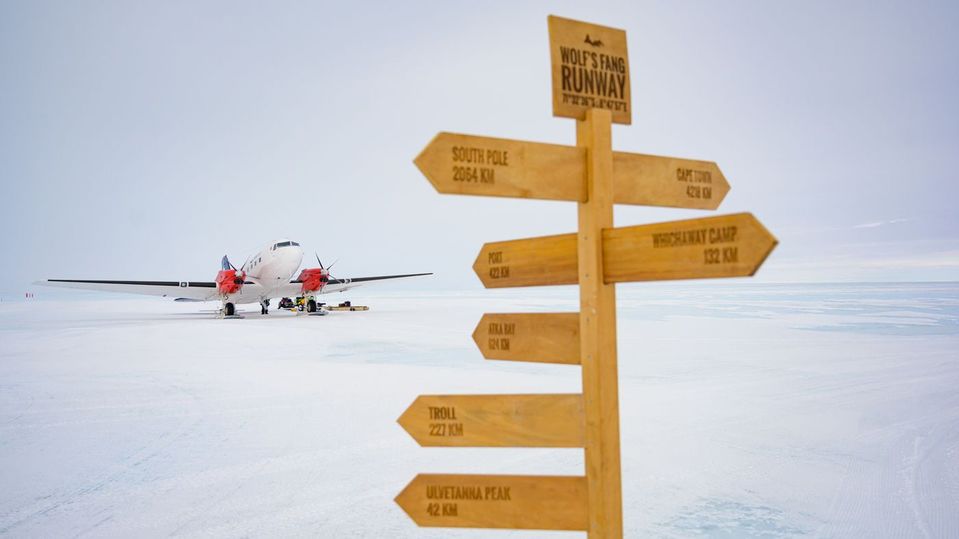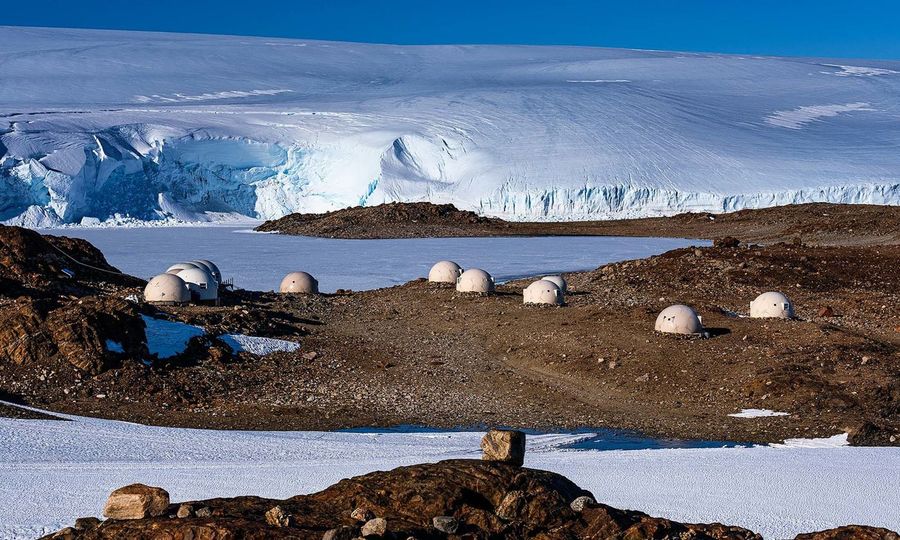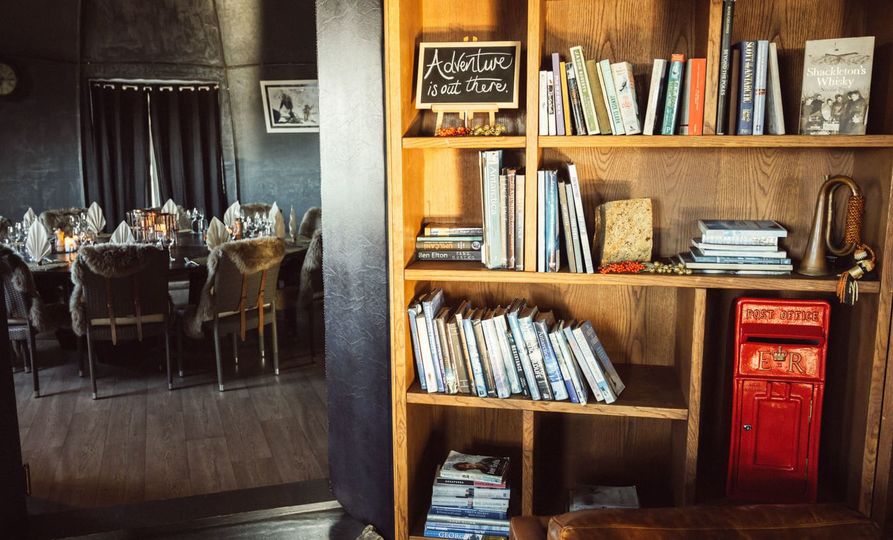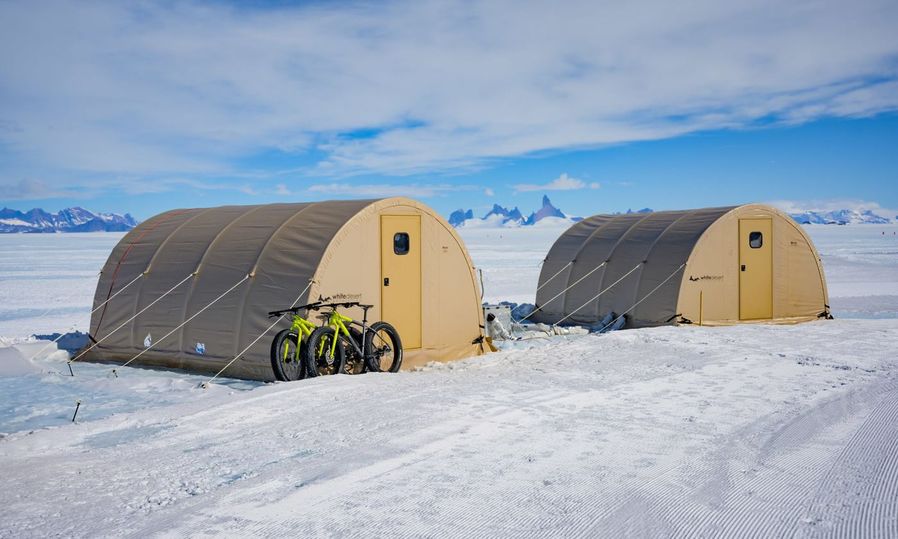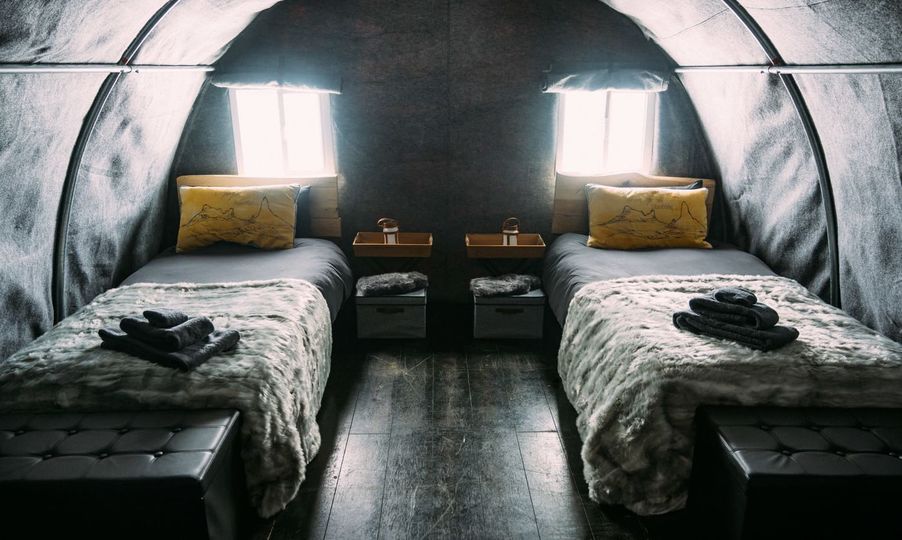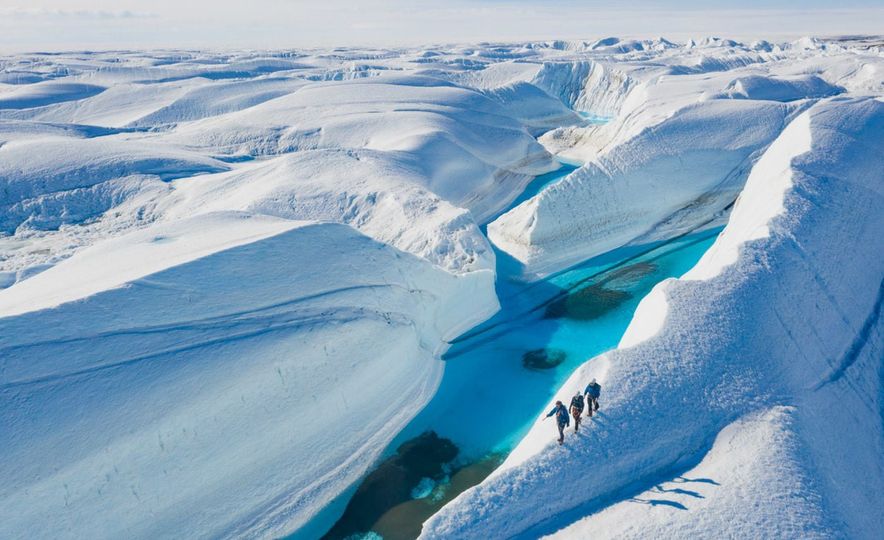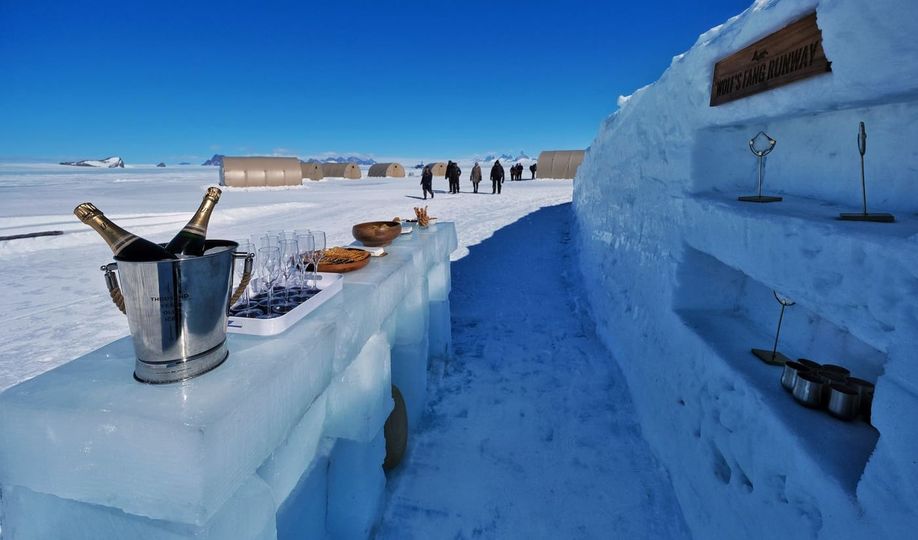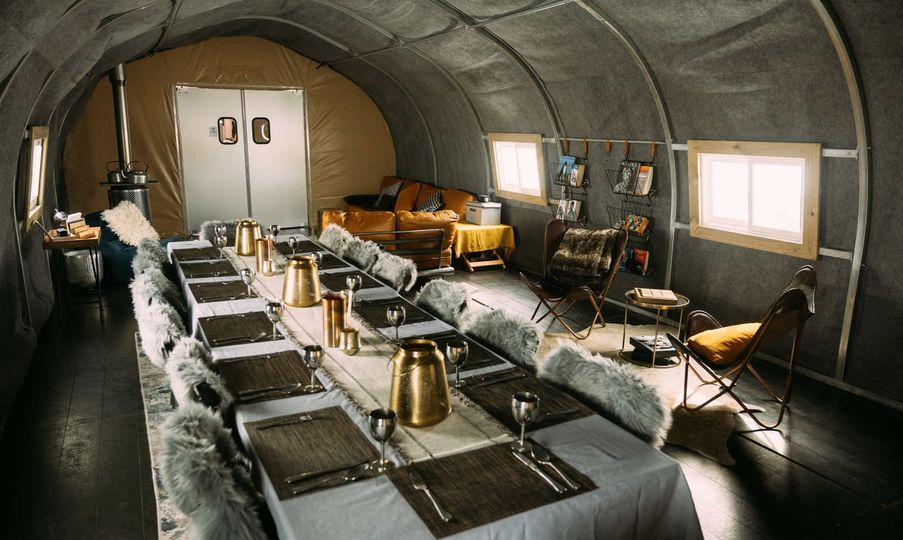How to build a hotel in Antarctica
Thought running a business was hard? Try doing it on the White Continent...
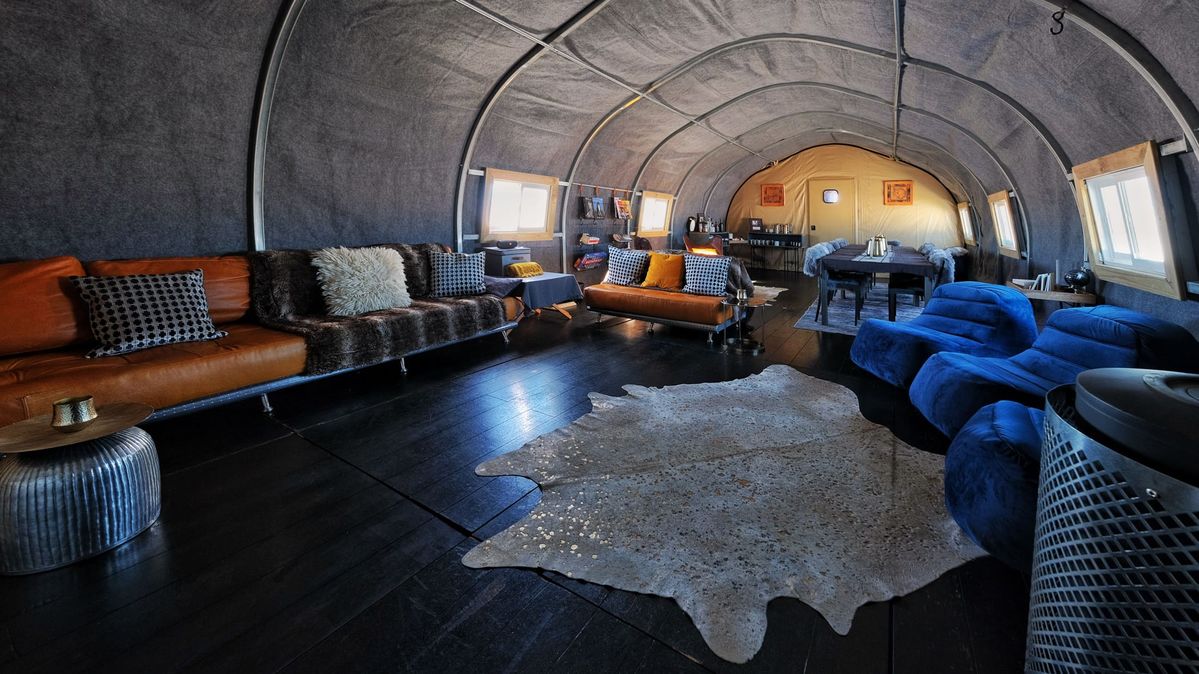
Technically, the first step in building Wolf’s Fang Camp, a 12-person tented accommodation opening in November in the interior of Antarctica, happened over a decade ago: conjuring an airport in the middle of the wilderness with a runway paved into 100,000-year-old sheets of ice.
The next step was building a fueling station and cargo hold to store incoming lumber and building materials, all while scouting for locations near glacial lakes (for water supply), sheltered by rocks (to buffer winds), and with views to take your frosty breath away.
Only after that can you begin to navigate the bizarre logistics of running electric and plumbing lines to a place that, in the dead of winter, sees zero hours of daylight.
And then you have to get staff trained in the art of building ice chests for food storage or driving across the frozen tundra to take tourists to the South Pole.
Persuading people to come is the easy part.
The building of Wolf’s Fang is a story that spans roughly 17 years, spearheaded by Patrick Woodhead, a world record-holding polar explorer who is also the chief executive officer and founder of parent company White Desert.
The property is his second camp on the continent, and takes advantage of the airport and support buildings created for the first one, representing a mastery of doing business in a truly hostile environment.
The economics of it all are staggering. Take a can of Coca-Cola: The most efficient means of getting one to Antarctica can raise the sticker price to a whopping US$38.62 per unit, as opposed to, say, 71¢ in a New York grocery store.
That’s largely to do with the fact that any plane capable of carrying that can of soda would have to make the 8,000-mile, 10-hour loop from Cape Town to Antarctica and back without refueling, which limits its transit methods almost exclusively to Gulfsteam 550s.
“It’s the most expensive can of Coke in the whole wide world,” says Woodhead, “and that’s just the beginning.”
‘Sheer, stupid economics’
White Desert is the only hotel operator in Antarctica – but put an asterisk next to that, because neither of its properties can technically be called hotels.
Strict regulations about working in as delicate an environment as Antarctica require the company to build in a zero-impact, semi-permanent style that can be broken down quickly and leave no trace, which designates the properties as camps, not hotels.
The same environmental concerns also limit White Desert’s scalability, meaning that Woodhead is investing in building an enormous operation whose capacity will likely max out at around 600 guests per year, no matter how large the addressable market may be.
Given that he’s the lone businessman with a vested interest, no research has been commissioned on the exact size of that market.
The annual record for cruise tourism, which has waxed and waned, was 46,000 passengers in the 2007-08 season.
In terms of the much-smaller land business, which swaps the death-defying passage of the Drake Channel with a fancy, five-hour, private flight, Woodhead says: “There is absolutely room to grow.”
Whichaway Camp, White Desert’s first project, has been completely redesigned four times since it opened more than a decade ago.
With six round pods decked out in felt and fur, it sleeps up to 12; Wolf’s Fang, which has been in development for a few years, is more adventurous, with solar-heated tents, and sleeps an additional dozen explorers.
Together, the two properties can handle 300 guests over the November to January summer season and are already half-booked for 2022. Still, the company’s capacity will grow a bit more before Woodhead maxes out: A third camp is in the works with a design that Woodhead says “looks like Dr. Evil’s lair.”
Whereas Wolf’s Fang is near the company’s air strip in an interior location that features 1,000-foot-tall rock formations, Whichaway lies some 90 miles away, alongside an enormous frozen lake near the coast. Combining them will be easy for guests interested in getting the best of both experiences.
“There may be enough demand to scale - and that might seem greedy and good from a financial perspective, but it would be terrible for the brand,” Woodhead says. “When you see emperor penguins, you don’t want to do it with 1,000 people. We’re reaching our level of where we want to be.”
The business can also burn money at an alarmingly fast rate. “If you make a mistake and launch a Gulfstream when the weather is marginal, you’ve just burned $120,000,” says Woodhead about having to reroute aircraft or send them back to their origination point amid frequently mercurial conditions.
Every hour’s worth of fuel is like gold, he adds: Its cost goes from US$100 per barrel in Cape Town to US$800 at the Antarctic runway.
At the refueling station that White Desert runs on the South Pole, gas takes an entire month to arrive on special sleds with top speeds of 6 miles per hour, raising the total price to US$5,000 per barrel when accounting for labor and scarcity.
And forget about shipping in things that can’t fit into a plane’s cargo hold: That takes a jigsaw puzzle’s worth of icebreaking ships, cranes to hoist materials over gigantic ice shelves, and tugging prefabricated pieces to their destination, all under the watchful eye of sustainability authorities who take care that the fragile landscape remain completely undisturbed.
“We’re really a logistics company, or an aviation company with hospitality on the side,” Woodhead notes.
Much of this happens again and again. The camps are taken down, stored, and rebuilt seasonally, and the day-to-day operating logistics include having to melt snow so guests will have water to shower, rationing planeloads of produce stored in igloo freezers, and shipping every iota of waste (human or otherwise) back to the mainland.
Though he calls his business “well capitalized” at this point, it’s no wonder Woodhead faces no competition.
“The sheer, stupid economics of it would prevent [any other] people from building camps in Antarctica. Not many people are as stupid as I am,” he says, only partly joking. “I don’t see a proliferation of camps, ever.”
A priceless experience
For all that, the experiences Woodhead has brought to life are considered by many to be priceless, which is useful, given their very considerable price tag. Stays at the new Wolf’s Fang camp run upward of $45,000 per person for eight-day trips.
Guests won’t see additional charges on those Cokes, though; the rates include meals, drinks, guided excursions, transfers, and round-trip flights from Cape Town on that Gulfstream 550.
A typical day’s experiences could include ice climbing, abseiling, fat biking, or hiking through neon-blue ice tunnels - potentially under the midnight sun.
Many itineraries also include expeditions to the South Pole, to see penguins, and to hike mountain summits never climbed by humans. (White Desert tells guests to pack as if they’re going on an epic ski trip and then outfits them at the site with additional layers for the harsh polar climate.)
There are quite a few, luxuries at the camp. The most intriguing may be highballs of top-shelf whiskey served from a snow bar and chilled with Jurassic-era ice, which melts at an – ahem – glacially slow pace.
Meals are better suited for Princess Elsa than for Sir Ernest Shackleton, often spanning six courses at dinner and reflecting the guests’ personal preferences.
Woodhead says clients are typically won over before they experience all the camp features. The second they step off the jet, he says, “It’s like seeing the ocean for the first time - it’s world-shakingly incredible.”
It’s also a form of total surrender: Typically Type A clients know that from that moment onward, their typical whims and fancies will be harder (if not impossible) to access, and that transiting from place to place will shift from being able to call a car to being at the mercy of weather gods who might easily send you into flying into ice storms.
“Our trips are for the adventurous rich, not those who want to lay out on their yachts in Monaco,” Woodhead says, adding that there is no shortage of the former. Among his clients are royals and celebrities who relish the seclusion, as well as plenty of family office types.
“Only occasionally do you get the type of person who would complain that there isn’t enough ice in their G&T in this setting,” he laughs.
This article is published under license from Bloomberg Media: the original article can be viewed here
